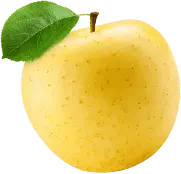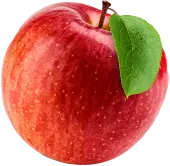
In my last blog, I contemplated how the COVID-19 pandemic would impact pet food sales. Of course, like everyone else, I saw the initial stockpiling back in March. But now it’s mid-May and market watchers have had a chance to absorb some of the consumer behavior taking place. According to Nielsen’s Sean Simpson speaking at a recent Petfood Industry webinar, the pet food segment like the rest of the American economy is in the midst of disruptive times.
The same shift seen in general grocery from brick and mortar stores to online shopping was seen in the pet food segment. Simpson said brick and mortar and pet specialty retailers have been hit especially hard because of this shift. The size of the pet food market in 2019 was $36 billion, up 7.3% from 2018. Mainstream retail (6.7%) and e-commerce sales (28.5%) increased, while pet retail specialty outlet sales decreased 1.5%. So far in 2020 this shift to e-commerce has been accentuated due to the pandemic. During the stocking up in March, in-store sales rose 26% YOY, while online sales jumped 77% YOY.
Pet Food Weekly Sales
Looking at pet food sales graphs comparing weekly sales over the past three years from Feb. thru April, he showed a similar pattern through Feb in all the graphs. Then in March 2020 figures show a dramatic spike, hitting their peak in the third week, where shoppers stocked up. This peak was followed by a significant drop the next week, which brought sales figures 14% below 2019 sales during the same period. Simpson speculated about when the next purchase cycle would begin, and whether it would return to pre-pandemic patterns. This remains to be seen. But what will probably persist is consumers’ reliance on e-commerce for at least their pet food staples.
Product mix
Pet parents went all in when stocking up for their furry family members, stocking up on not only food, but treats as well. Sales of dry food, wet food and treats all spiked during mid-March, with dry food racking up the biggest sales, followed by wet food and treats. All the stocking up depressed pet food sales throughout April. The only bright spot was in treat sales, which rebounded in the last week of the month, venturing once again into positive territory.
Where will all this lead? Simpson ended his presentation posing a number of questions about where the pet food industry goes next.
- When will purchase cycles return to normal?
- What’s the lasting impact of channel shifting?
- Will online sales gain even more momentum?
- Are pet parents trading down to value from premium?
- Will the pet industry weather another recession like ‘08/’09?
Disruptive innovation
That leaves us with a lot of unknowns, but I also like to think it leaves us with opportunities. Instead of sitting back to see what happens, we can use this time of disruption to explore market opportunities. While we may not be able to predict when things will return to ‘normal’ or what that will look like, we can innovate to be part of the ‘next normal.’ Take for instance treats – sales are rebounding after the post stockpile decline, showing that pet parents are continuing to buy them. Just as people are buying treats for themselves, they’re doing the same for their pets.
Treats offer an opportunity to innovate. Consider pet health & wellness, many pet owners are interested in improving and protecting their pet’s quality of life and they seek the same characteristics from the ingredients used in pet foods as they do from the ingredients included in their own food. We’re seeing strong interest in consumer sectors for immunity products. Why not similar treats with immune-enhancing benefits for pets? Adding fruits provide antioxidants, probiotics, vitamins/minerals, and are naturally wholesome.
This creates opportunities for formulators and pet food manufacturers to capture market share with innovative products and beneficial ingredients, such as dried fruit, powders and purées.
Examples of fruit benefits:
- Apples (acetylcholine) – Supply a source of fiber, phytonutrients, flavonoids, vitamin C, and potassium.
- Blackberries – America’s home-grown “super” fruit, blackberries contain high levels of antioxidant phytonutrients (particularly anthocyanins). Blackberries supply a good source of fiber, manganese, vitamin C, folate acid and magnesium.
- Strawberries – Packed with vitamins, fiber and high levels of antioxidants – in fact, strawberries are among the top 20 for fruits in antioxidant capacity. They are also a good source of vitamin C, manganese, folate and potassium.
Here at Tree Top we can help you with your disruptive innovation with natural, organic, American grown wholesome fruit ingredients. Contact us at 509-698-1435, or click here to explore our fruit ingredient products.


